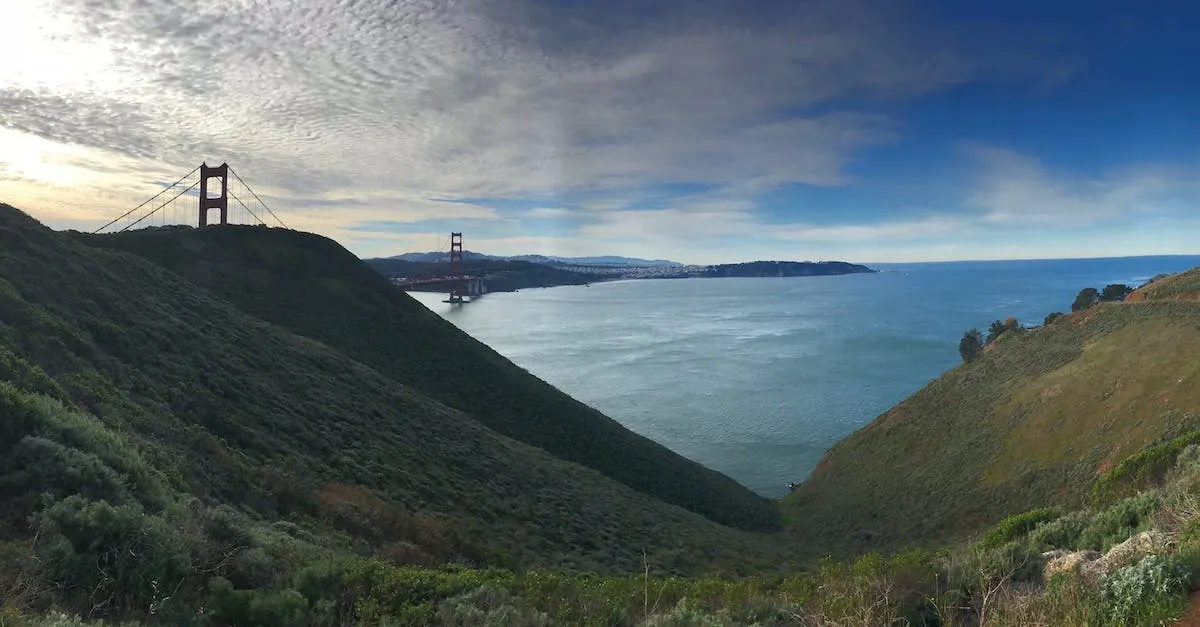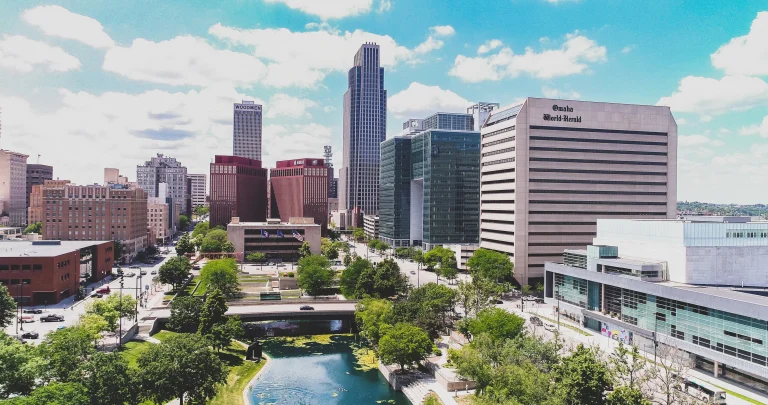Why Does San Francisco Have So Many Hills? The Geologic Forces That Shaped The City
With its iconic steep streets and dazzling views, San Francisco is renowned for its hilly landscape. If you want a quick explanation, San Francisco’s many hills are largely the result of its unique geographic location, situated on the tip of a peninsula and nearby a major fault line. But there’s much more to the story behind the city’s iconic topography.
In this comprehensive guide, we’ll explore the geologic forces that created San Francisco’s hills over millions of years. We’ll look at how plate tectonics, volcanic activity, and glacial erosion all combined to mold the city’s distinctive terrain. We’ll also discuss how San Francisco’s hills impacted early development and city planning.
Plate Tectonic Activity and the San Andreas Fault
One of the main reasons why San Francisco has so many hills is due to plate tectonic activity and the presence of the infamous San Andreas Fault. The city is located on the boundary between the Pacific Plate and the North American Plate, which are constantly moving.
This movement has resulted in the creation of the San Andreas Fault, a major fault line that runs through California.
As the plates move past each other, they create stress and pressure along the fault line. Over time, this stress is released in the form of earthquakes, which have played a significant role in shaping the landscape of San Francisco.
The movement along the fault line has caused the rocks to fracture and uplift, leading to the formation of hills.
The Effects of Erosion
In addition to plate tectonic activity, erosion has also played a role in the formation of the hills in San Francisco. The city is surrounded by water on three sides, with the Pacific Ocean to the west and the San Francisco Bay to the north and east.
This proximity to water has subjected the land to powerful forces of erosion over millions of years.
The combination of wind, rain, and waves has gradually worn down the softer rocks, leaving behind the more resistant ones. This selective erosion has contributed to the formation of hills, as the softer rocks are eroded away, while the harder rocks remain intact.
The result is a cityscape characterized by rolling hills and steep inclines.
The Role of Volcanic Activity
Another factor that has influenced the topography of San Francisco is volcanic activity. The entire region is part of the Pacific Ring of Fire, a region known for its high volcanic and seismic activity.
While there are no active volcanoes in the immediate vicinity of the city, the remnants of past volcanic eruptions can still be seen in the form of volcanic rocks and hills.
Millions of years ago, volcanic eruptions occurred in the area, depositing layers of lava and volcanic ash. Over time, these deposits hardened and were uplifted by tectonic forces, creating the hills that are now a prominent feature of San Francisco’s landscape.
Volcanic Origins of Some Hills
San Francisco’s unique landscape is a result of various geologic forces that have shaped the city over millions of years. One of these forces is volcanic activity, which played a significant role in the formation of some of San Francisco’s hills.
Millions of years ago, the area that is now San Francisco was located near a tectonic plate boundary. This boundary, known as the Pacific Plate, is part of the larger Ring of Fire, a region around the Pacific Ocean characterized by intense volcanic and seismic activity.
As the Pacific Plate moved northward, it encountered the North American Plate, resulting in the formation of the Cascade Range, which stretches from northern California to British Columbia.
During this tectonic collision, volcanic activity occurred along the San Andreas Fault, which runs through the San Francisco Bay Area. This volcanic activity led to the formation of several volcanic peaks and hills in and around San Francisco.
The Twin Peaks
One of the most prominent examples of volcanic origin in San Francisco is the Twin Peaks, a pair of hills located near the center of the city. These peaks were formed by volcanic activity millions of years ago and are composed of basalt, a type of volcanic rock.
The Twin Peaks offer stunning panoramic views of the city and are a popular tourist attraction.
Bernal Heights
Bernal Heights, another hill in San Francisco, also has volcanic origins. This hill is composed of rhyolite, a type of volcanic rock that is rich in silica. Bernal Heights offers beautiful views of the city and is known for its diverse flora and fauna.
The volcanic origins of these hills not only contribute to the unique landscape of San Francisco but also have important implications for the city’s geology and soil composition. The volcanic rocks found in these hills are rich in minerals, making them fertile ground for vegetation to thrive.
This, in turn, has attracted a diverse range of plant and animal species to these areas.
Understanding the volcanic origins of San Francisco’s hills provides a fascinating insight into the geological history of the city. It highlights the dynamic nature of our planet and the powerful forces that have shaped the landscapes we see today.
Exploring these volcanic peaks and hills is not only a great way to appreciate the natural beauty of San Francisco but also an opportunity to delve into its rich geological heritage.
Glacial Erosion Shaping the Land
One of the main factors that has contributed to the hilly terrain of San Francisco is glacial erosion. During the last Ice Age, the region was covered by glaciers that advanced and retreated multiple times over thousands of years.
These massive sheets of ice had a powerful erosive effect on the landscape, carving out deep valleys and shaping the hills we see today.
The Power of Glacial Ice
Glacial ice is incredibly heavy and exerts immense pressure on the land beneath it. As the glaciers moved and melted, they picked up rocks and sediment, acting as powerful bulldozers. The rocks carried by the ice scraped and gouged the earth, creating deep valleys and leaving behind moraines, which are deposits of rocks and soil.
The movement of the glaciers also created what are known as U-shaped valleys. Unlike V-shaped valleys formed by rivers, U-shaped valleys have flat bottoms and steep sides. These U-shaped valleys can be seen throughout the San Francisco area, such as in the iconic Twin Peaks and the Presidio.
The Legacy of Glacial Erosion
The glacial erosion that occurred thousands of years ago left a lasting impact on the topography of San Francisco. The hills that now define the city were shaped by the movement of glaciers and the deposition of rocks and sediment.
The elevation changes that result from this glacial activity can make for stunning vistas and breathtaking views of the city and its surrounding areas.
While San Francisco’s hills may present challenges for transportation and urban planning, they also contribute to the city’s unique charm and character. The hilly terrain provides opportunities for stunning panoramic views, picturesque neighborhoods, and iconic landmarks like Lombard Street, often referred to as the “crookedest street in the world.”
To learn more about glacial erosion and its impact on San Francisco’s landscape, you can visit https://www.nps.gov/goga/learn/nature/geology.htm.
Early Development and Urban Planning
When it comes to urban planning, San Francisco faced unique challenges due to its hilly terrain. The city’s early development was influenced by the geologic forces that shaped its landscape. In the mid-19th century, as San Francisco rapidly grew due to the California Gold Rush, urban planners had to find innovative ways to accommodate the city’s expanding population.
One key aspect of early development was the decision to build streets and infrastructure directly on the existing hills. While this presented challenges, such as steep inclines and uneven terrain, it was a practical solution at the time.
As a result, San Francisco’s iconic steep streets, such as Lombard Street, were born.
Another important factor in the city’s early planning was the construction of cable cars. In the late 19th century, Andrew Hallidie introduced the first successful cable car system in San Francisco. This mode of transportation was ideal for navigating the city’s hills, allowing residents to easily travel up and down the steep inclines.
Today, San Francisco’s cable car system remains a beloved symbol of the city’s unique character.
The Challenges of Urban Planning
The hilly terrain of San Francisco posed significant challenges for urban planners. Building on steep slopes required careful engineering to ensure stability and prevent landslides. Additionally, constructing infrastructure on hilly terrain required extensive grading and leveling of land, which added to the complexity and cost of development.
Despite these challenges, San Francisco’s early planners recognized the potential of the city’s unique topography. By embracing the hills rather than trying to flatten them, they created a cityscape that is both visually stunning and functional.
Preserving the City’s Character
Today, San Francisco’s hills are not only a defining characteristic of the city but also serve as a testament to the ingenuity of its early planners. These hills provide breathtaking views of the city, contribute to its distinct neighborhoods, and make for memorable experiences for residents and visitors alike.
Preserving the city’s character and ensuring the safety of its residents remains a priority for modern urban planners. As new development projects arise, careful consideration is given to the impact on San Francisco’s hills and the surrounding environment.
Design and engineering techniques are employed to mitigate potential hazards and maintain the integrity of the city’s unique landscape.
Iconic Hills and Views
San Francisco is famous for its breathtaking views and iconic hills that dot the city’s landscape. These hills not only add to the city’s unique charm but also provide visitors and residents with stunning panoramic vistas of the surrounding areas. But why does San Francisco have so many hills?
The answer lies in the geologic forces that shaped the city.
Plate Tectonics
San Francisco is located in a region known as the San Andreas Fault Zone, where two massive tectonic plates, the Pacific Plate and the North American Plate, meet. These plates are constantly moving and interacting with each other, causing earthquakes and shaping the Earth’s surface.
The movement of these plates has played a significant role in the formation of the hills in San Francisco.
Over millions of years, the Pacific Plate has been slowly sliding northward along the North American Plate. As the two plates grind against each other, they create immense pressure and friction. This pressure causes the land to buckle and fold, resulting in the formation of hills and mountains.
Erosion and Weathering
In addition to plate tectonics, erosion and weathering have also contributed to the creation of San Francisco’s hills. The city’s location along the coast exposes it to the powerful forces of wind and water, which gradually wear away at the land over time.
As rainwater flows down the slopes of the hills, it erodes the soil and sediment, gradually carving out valleys and canyons. The relentless action of wind and water over thousands of years has sculpted the hills into the unique shapes and contours that we see today.
Human Influence
While natural forces have played a significant role in the formation of San Francisco’s hills, human activity has also had an impact. During the city’s early years, the hills were often leveled to make way for development and construction.
However, in recent years, there has been a greater emphasis on preserving the city’s natural landscape and protecting its hills from excessive development.
San Francisco’s iconic hills not only provide stunning views but also serve as a reminder of the geologic forces that have shaped the city. Whether you’re taking a leisurely stroll up one of the city’s steep streets or enjoying a panoramic view from the top of a hill, the hills of San Francisco are truly a sight to behold.
Conclusion
San Francisco’s famous hills are far more than just pretty landmarks – they’re the result of powerful geologic forces over millions of years. The city’s unique topography has presented both challenges and opportunities for urban development, while creating some of the most spectacular views in the country. Whether you’re struggling up a steep slope or admiring the vistas, you can thank plate tectonics, volcanic upheavals, and massive glaciers for shaping San Francisco’s iconic landscape.








